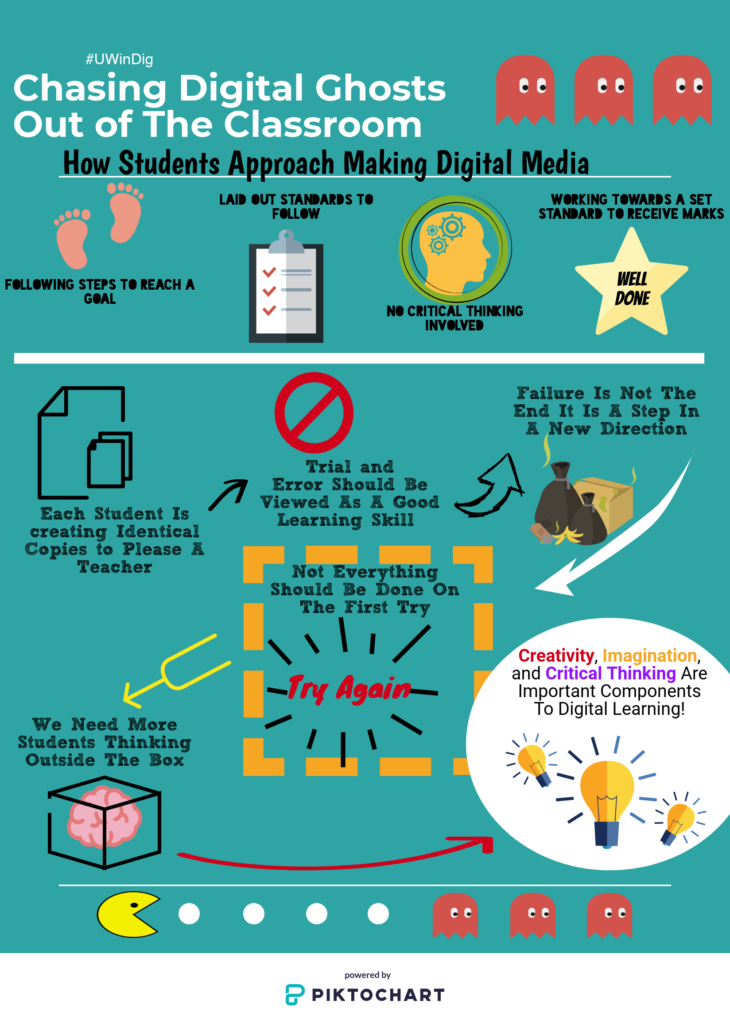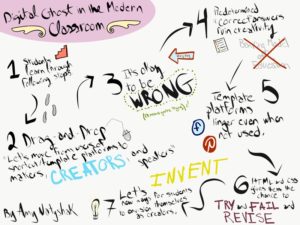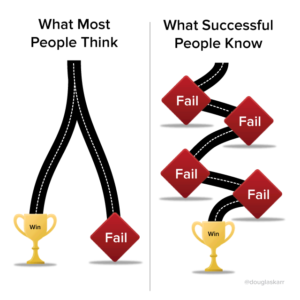An article by Ashley Hinck called “Digital Ghosts In The Modern Classroom” looks at the problems students have with learning to create digital media. Hinck talks about how the way students learn today is giving them false expectations about how to actually create digital media. Students are used to following a specific set of steps or guidelines for performing a certain task. Most of the time by following these guidelines the students will reach their desired end goal. Then students who have completed their task will show their teacher and she will congratulate them for being able to follow basic steps. Now this may sound a little silly but this is generally what tends to happen.
Students also have access to many websites or apps that allow them to use short cuts or pre made themes to design. Students can just select a theme and they can make something look creative without ever really having done anything creative themselves.
This point struck me pretty hard as I came across this when designing my own info graphic below. It was easy for me to select a theme, but then when I wanted to change a feature that is when I ran into trouble. A few times the web page would freeze or the wrong feature would change. These were just a couple of the small problems I had to overcome to create my info graphic.
The process or learning skill I often had to use well designing this info graphic was trial and error. This is a skill that many students today are overlooking. Students always want to get it right the first time or are afraid to fail. This is something that I want to emphasize in my teaching. Small failures every now and then are what lead to success! Tasks in life are not always going to be able to get accomplished by following a set of steps someone has laid out for you. That is why I think it is critical students go through trial and error as it allows them to develop creativity, be imaginative, and form critical thinking strategies. Not only will these skills be useful when developing digital media but they will translate across many domains of life.
-Craig Oakey




